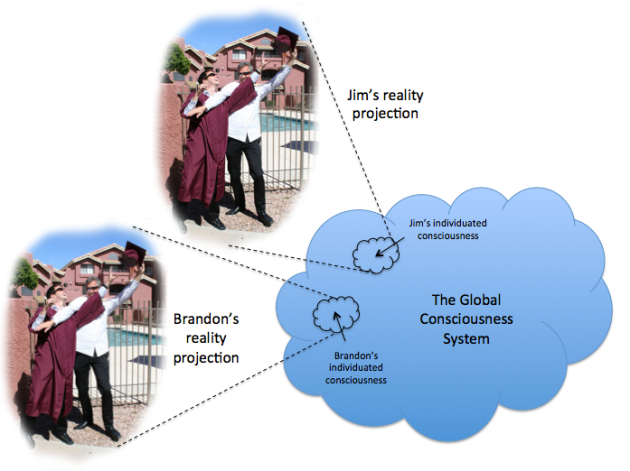Wigner’s Friend likes Digital Consciousness
December 26, 2019 3 Comments
Apparently your reality may be different than mine. Wait, what???
Several recent studies have demonstrated to an extremely high degree of certainty that objective reality does not exist. This year, adding to the mounting pile of evidence for a consciousness-centric reality, came the results of an experiment that for the first time, tested the highly paradoxical Wigner’s Friend thought experiment. The conclusion was that your reality and my reality can actually be different. I don’t mean different in the sense that your rods and cones have a different sensitivity, or that your brain interprets things differently, but fundamentally intrinsically different. Ultimately, things may happen in your reality that might not happen in my reality and vice versa.
Almost sounds like a dream, doesn’t it? Or like you and I are playing some kind of virtual reality game and the information stream that is coming into your senses via your headset or whatever is different that the information stream coming into mine.
BINGO! That’s Digital Consciousness in a nutshell.
Eugene Paul Wigner received the Nobel Prize for physics in 1963 for his work on quantum mechanics and the structure of the atom. More importantly perhaps, he, along with Max Planck, Neils Bohr, John Wheeler, Kurt Godel, Erwin Schrodinger, and many other forward thinking scientists and mathematicians, opposed the common materialistic worldview shared by most scientists of his day (not to mention, most scientists of today). As such, he was an inspiration for, and a forerunner of consciousness-centric philosophies, such as my Digital Consciousness, Donald Hoffman’s MUI theory, and Tom Campbell’s My Big TOE.
As if Schrodinger’s Cat wasn’t enough to bend people’s minds, Wigner raised the stakes of quantum weirdness in 1961 when he proposed a thought experiment, referred to as “Wigner’s Friend.” In the scenario are two people, let’s say Wigner and his friend. One of them is in an enclosed space, hidden to the other and observes something like Schrodinger’s cat, further hidden in a box. At the time Wigner opens the box the wave function collapses, establishing whether or not the cat is dead. But the cat is still in superposition to Wigner’s friend, outside of the entire subsystem. Only when he opens the door to see Wigner and the result of the cat experiment, does his wave function collapse. Therefore, Wigner and his friend have differing interpretations of when reality become realized; hence different realities.
Fast forward to 2019, and scientists (Massimiliano Proietti, Alexander Pickston, Francesco Graffitti, Peter Barrow, Dmytro Kundys, Cyril Branciard, Martin Ringbauer, and Alessandro Fedrizzi) at Heriot-Watt University in Edinburgh, were finally able to test the paradox using double slits, lasers, and polarizers. The results confirmed Wigner’s hypothesis to a certainty of 5 standard deviations, which essentially means that objective reality doesn’t exist, and your and my realities can differ- to a certainty of 1 in 3.5 million!
Of course, I live for this stuff, because it simply adds one more piece of supporting evidence to my theory, Digital Consciousness. And it adds yet another nail in the coffin of that ancient scientific religion, materialism.
How does it work?
Digital Consciousness asserts that consciousness is primary; hence, all that we can truly know is what we each experience subjectively. This experiment doesn’t necessarily prove that the fundamental construct of reality is information, but it is a lot more plausible that individual experiences based on virtual simulations are at the root of this paradox rather than, say, a complex violation of Hilbert space, allowing parallel realities based on traditional physical fields to intermingle. As an analogy, imagine that you are playing an MMORPG (video game with many other simultaneous players) – it isn’t difficult to see how each individual could be having a slightly different experience, based perhaps on their skill level or something. As information is the carrier of the experience, the information entering the consciousness of one player could easily be slightly different than the information entering the consciousness of another player. This is by far the simplest explanation, and by Occam’s Razor, supports my theory.
Too bad Wigner isn’t alive to see this experiment, or to ponder Digital Consciousness theory. But I’m sure his consciousness is having a good laugh.



